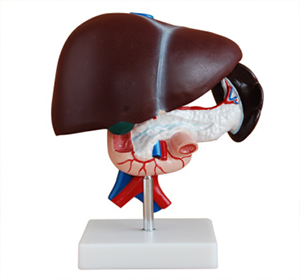Hepatopancreatic duodenal model is an advanced teaching tool in medical education, and its unique design and function play an important role in significantly shortening the learning curve of learners. Here are a few ways to concretely reflect this:
Models are not only used for observation, but also as a tool to simulate practice. Learners can simulate surgical operations and anatomy exercises on the model, and deepen their understanding and memory of theoretical knowledge through repeated practice. This way of simulating practice is not only safe and risk-free, but also allows learners to accumulate valuable experience before real operation, so that they can be more comfortable in actual operation. In this way, the skill level of learners can be significantly improved in a short time, and the learning curve will naturally be shortened accordingly.

Supports multiple interactive learning styles. Learners can interact with the model by touching, rotating, disassembling and other actions, which can greatly improve learners' interest and enthusiasm in learning. At the same time, visual, tactile and other sensory stimuli in the interaction process can also help deepen memory, so that learners can grasp the knowledge more firmly. Therefore, using a model to learn often leads to better learning results and a smoother learning curve.
In medical education, teachers often use models to explain. As an auxiliary tool, it can clearly show the knowledge points that teachers want to convey, so that the explanation is more vivid and specific. While listening to the teacher, learners can intuitively see the corresponding structure on the model, so as to better understand the teacher's explanation content. This teaching method not only improves the teaching efficiency, but also enables learners to master the knowledge faster and further shorten the learning curve.
In summary, the hepatopanpancreaticoduodenal model effectively shortens the learning curve of learners and improves the efficiency and quality of medical education through visual display, simulation practice, interactive learning and assisted explanation.
